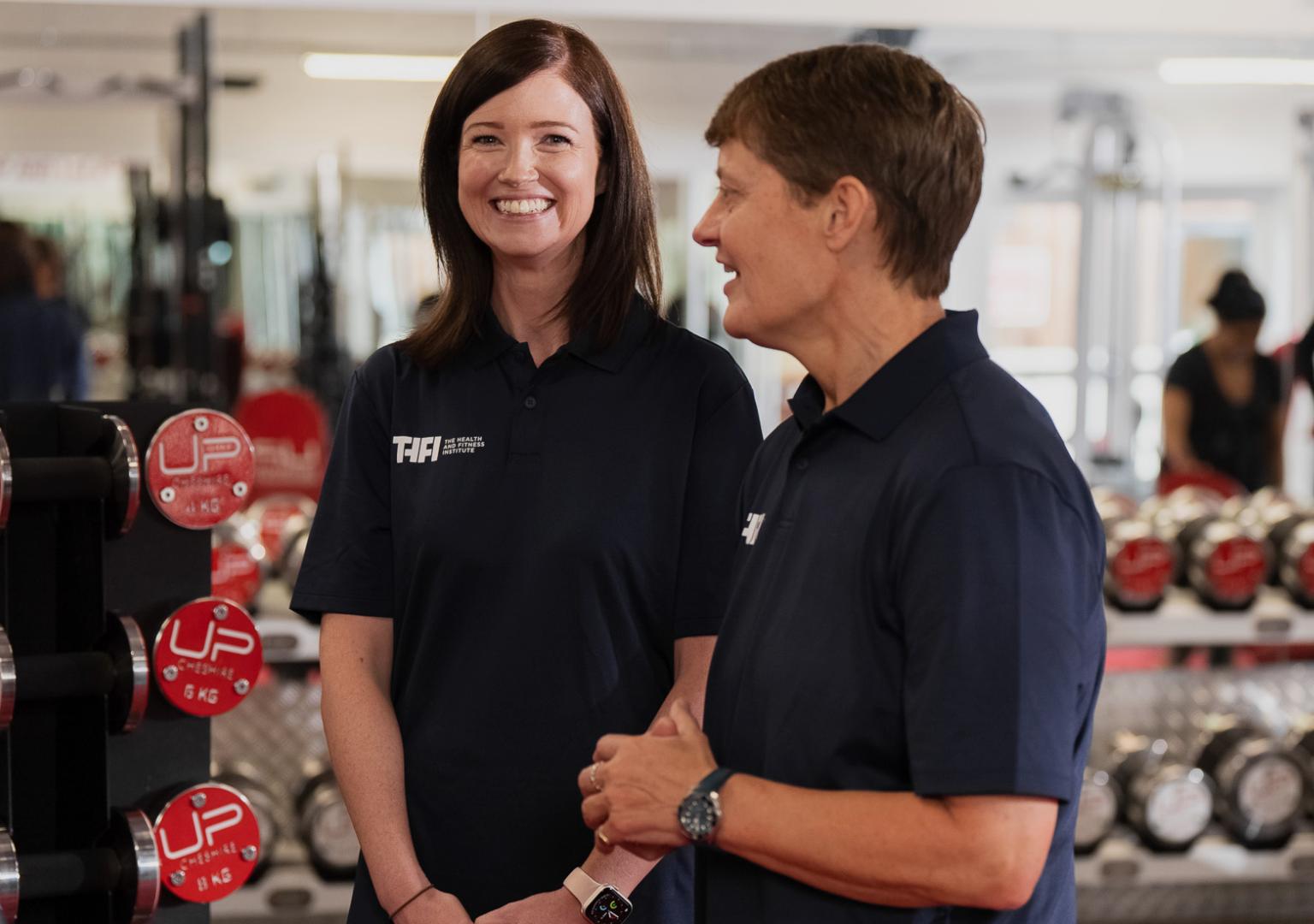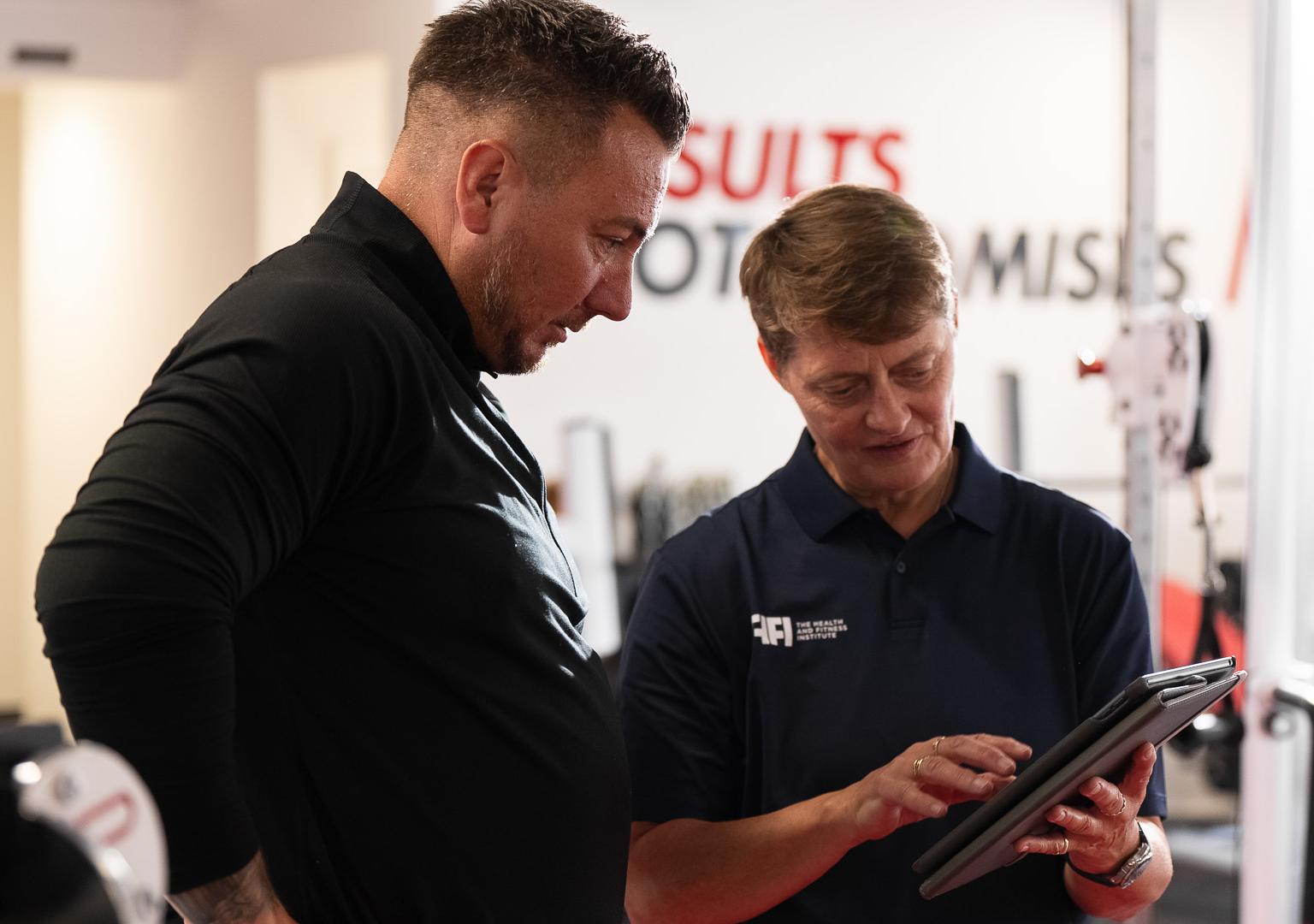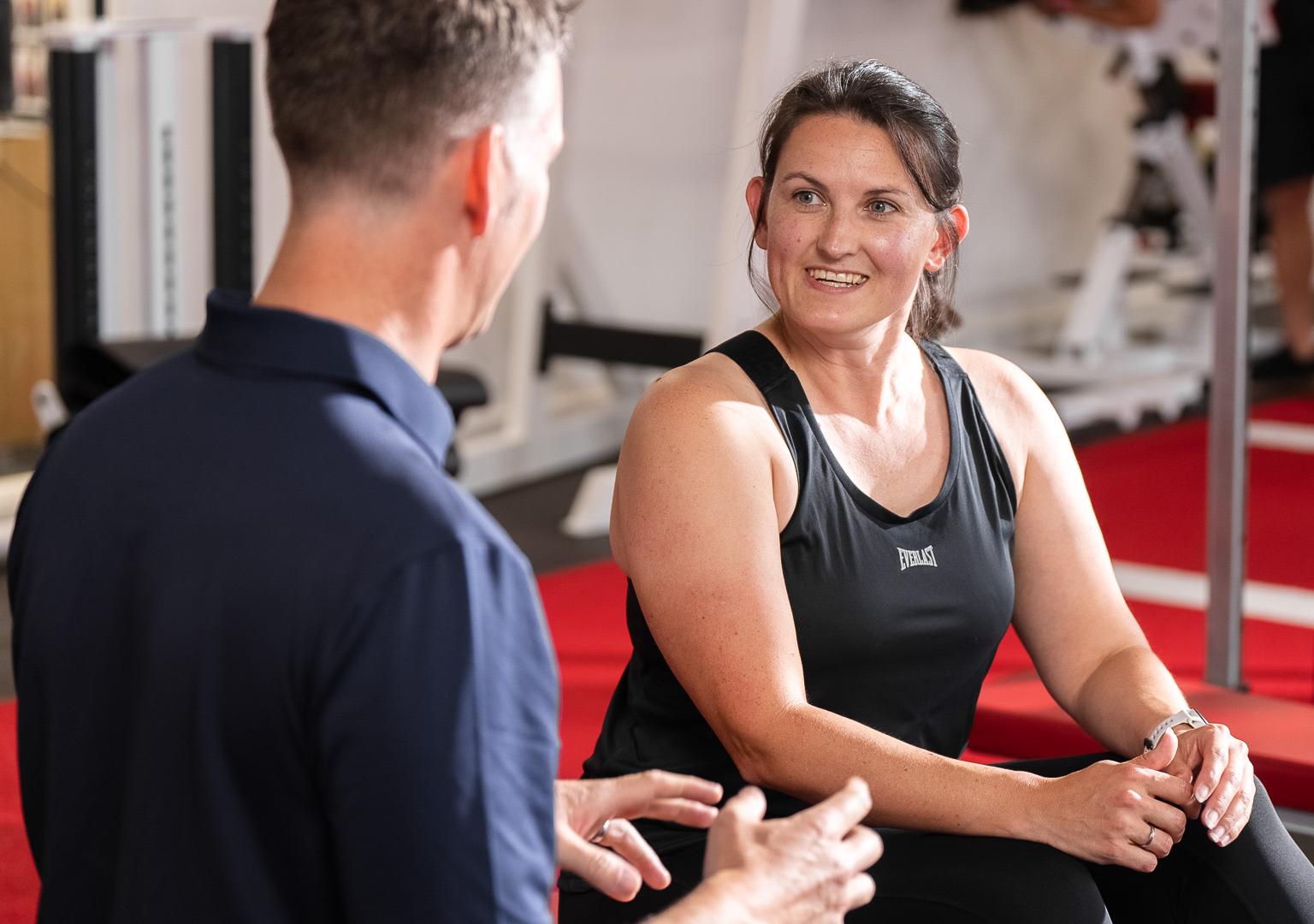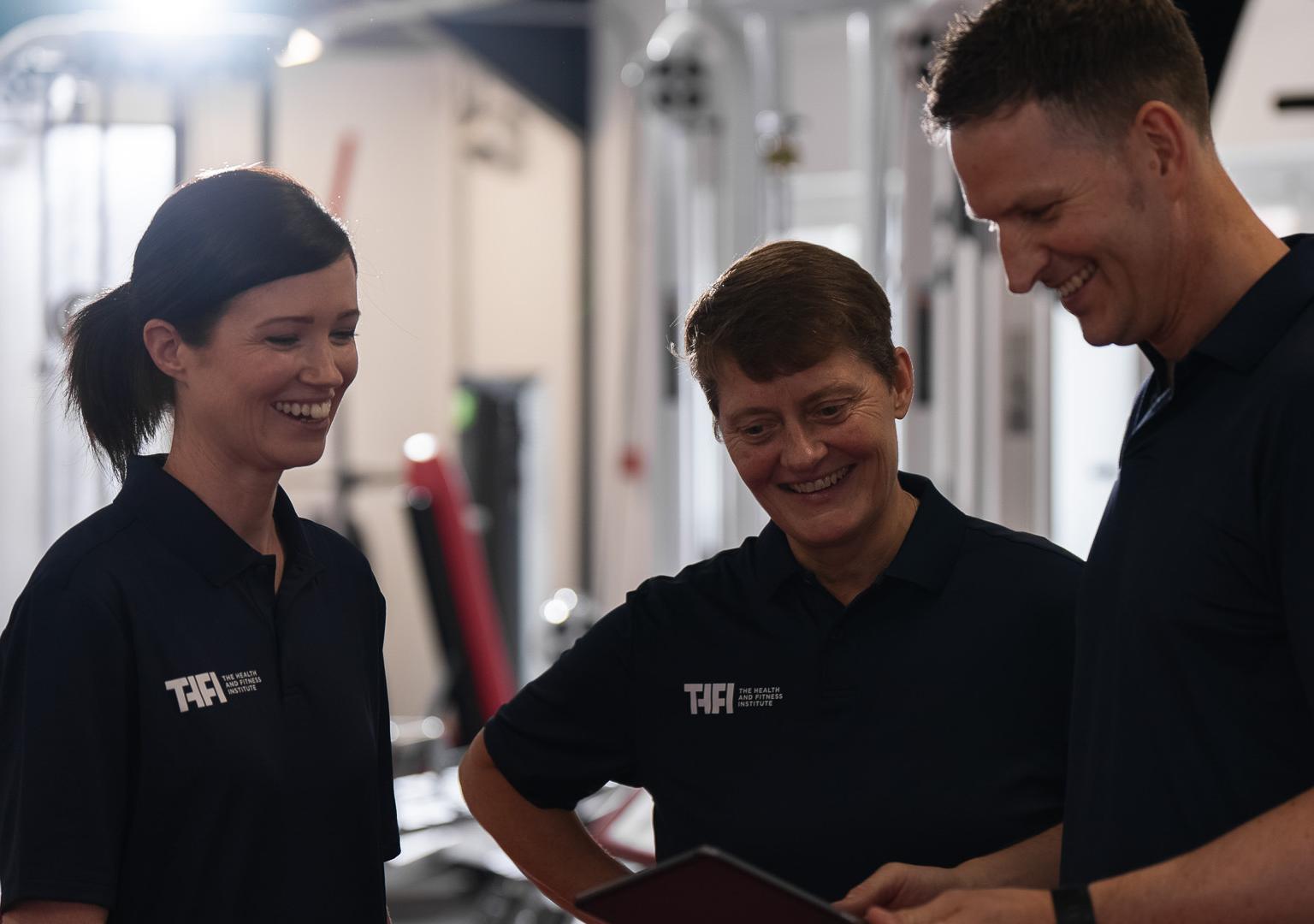How to Write a Winning CV for a Job in Personal Training

Your CV might be the single most important thing you write as a personal trainer.
Whether you’re applying at a local health club, university, or sports performance clinic, writing a stand-out CV could be the difference between landing your dream job or being thrown on the ‘reject’ pile without a second look.
A well-written resume is a selling tool that gives prospective employers a snapshot of your education, experience, skills, and qualities with a single aim – securing you an interview.
You’ve got maybe 60 seconds to grab the reader’s interest and avoid being put in the bin – so it’s critically important to nail it.
But how do you write a CV that stands out from all the rest?
What are the key details that employers want to read?
And how do you sell yourself in a way that hits the right notes so your phone is ringing off the hook with employers wanting to speak to you?
We’ve created the ultimate guide that every personal trainer looking to take the next step in their career needs to read to write a winning CV....
Qualities Employers Look For
To stand out in the competitive world of personal training, you must possess a unique set of qualities that employers value. While qualifications and certifications are essential, soft skills are equally vital. Employers seek candidates who exhibit:
- Passion for Fitness: Your genuine love for fitness will be your greatest asset. Convey your enthusiasm in your CV by sharing your personal fitness journey or achievements.
- Empathy and Communication Skills: The ability to connect with clients, understand their needs, and communicate effectively is paramount.
- Adaptability: Fitness trends and client preferences evolve, so being adaptable and open to learning is crucial.
- Results-Oriented: Employers want trainers who can help clients achieve their fitness goals, so highlighting your track record of success is essential.
Preparing Your Personal Training CV
Choosing the Right CV Format
Your CV format is like the canvas for your professional story. It's the first thing employers notice, and it sets the tone for how your qualifications are presented. Here are some tips for choosing the right format:
- Chronological: This format lists your work history in reverse chronological order, starting with your most recent job. It's ideal if you have a consistent work history in the fitness industry and want to showcase your career progression.
- Functional: Use this format if you want to emphasize your skills and qualifications over your work history. It's useful if you're transitioning from another field or have gaps in your employment history.
- Combination: This hybrid format combines elements of both chronological and functional CVs. You can highlight your skills and qualifications while still showcasing your work history.
Select the format that best suits your background and career goals. For most personal trainers, a chronological or combination format is the preferred choice, as it allows you to showcase your relevant work experience and qualifications effectively.
Essential Contact Information
Before delving into the content of your CV, ensure that your contact information is clear and professional. Include the following details:
- Full Name: Use your full legal name; avoid nicknames or abbreviations.
- Phone Number: Provide a reliable contact number where potential employers can reach you.
- Email Address: Use a professional email address that includes your name (e.g., johnsmith@email.com).
- Location: Mention your current city or town; you don't need to include your full address.
Remember, your contact information is the gateway for employers to reach out to you, so ensure it's accurate and up-to-date.
Crafting a Captivating Personal Statement
Your personal statement, also known as a CV summary or objective, is your chance to make a strong first impression. It's a concise paragraph at the beginning of your CV that highlights your key strengths, experiences, and career goals. Here's how to craft a captivating personal statement:
Show Your Passion: Start with a sentence that conveys your genuine passion for fitness. Let employers know that you live and breathe a healthy lifestyle.
Highlight Relevant Qualifications: Mention your certifications, degrees, and any specialised training that sets you apart.
Share Your Unique Approach: Explain what makes your training style unique. Are you known for motivational coaching, client-focused strategies, or innovative workouts?
State Your Career Goals: Briefly outline your objectives within the personal training field, whether it's helping clients achieve peak performance or specialising in a particular fitness area.
Here's an example of a captivating personal statement:
"Passionate personal trainer with a Bachelor's degree in Sports Science and a proven track record of transforming clients' lives through innovative workouts and tailored fitness plans. Committed to helping individuals achieve their fitness goals and enhance their overall well-being."
Your personal statement should be concise and engaging, providing employers with a snapshot of your qualifications and enthusiasm. It's the perfect way to draw them into the rest of your CV, where you can provide more detailed evidence of your fitness expertise and experience.
Crafting Your Personal Statement
Your personal statement is the gateway to making a memorable impression on potential employers. It's the first section of your CV that allows you to showcase your passion, qualifications, and unique approach as a personal trainer. In this section, we'll delve into the subtopics that will help you craft a compelling personal statement:
Showcasing Your Passion for Fitness
Begin your personal statement by letting your passion for fitness shine through. This is your opportunity to convey your deep-rooted enthusiasm for helping others lead healthier lives. Here's how to showcase your passion:
- Start with a Hook: Open with an attention-grabbing sentence that encapsulates your love for fitness. For example, "My journey as a personal trainer began with a love for fitness that's as strong as a kettlebell swing."
- Share Personal Insights: Explain why fitness is more than just a job for you. Share personal anecdotes or experiences that highlight your commitment to a healthy lifestyle.
- Express Empathy: Show your understanding of the challenges people face on their fitness journeys. Let employers know that you empathize with your clients and are dedicated to supporting them.
Highlighting Relevant Qualifications
In this part of your personal statement, focus on your qualifications and certifications that make you a standout personal trainer:
- List Your Credentials: Mention your relevant degrees, certifications, and training. Be specific about the qualifications that set you apart, such as a degree in Sports Science or a specialty certification in nutrition.
- Quantify Achievements: If you've received any special awards or distinctions in your field, include them. For example, "Recipient of the 'Trainer of the Year' award for exceptional client results."
- Link to Your Passion: Connect your qualifications to your passion for fitness. Explain how your educational background equips you to provide top-notch training and guidance.
Conveying Your Unique Approach
What makes you stand out as a personal trainer? Your unique approach sets you apart from the competition. Here's how to convey this in your personal statement:
- Define Your Approach: Explain what makes your training style distinctive. Are you known for your motivational coaching techniques, personalized fitness plans, or holistic wellness approach?
- Share Success Stories: If you have success stories of clients you've helped achieve remarkable results, briefly mention them. This demonstrates the effectiveness of your approach.
- State Your Values: Highlight your core values as a trainer. Whether it's a commitment to client empowerment or a dedication to evidence-based training, make it clear.
Example of a Crafting Your Personal Statement:
"My journey as a personal trainer began with a love for fitness that transformed my own life. With a Bachelor's degree in Sports Science and certifications in nutrition and strength training, I bring a wealth of knowledge to my clients' fitness journeys. What sets me apart is my unwavering commitment to motivating individuals to unlock their full potential. I've witnessed clients achieve incredible transformations, from shedding excess weight to reaching new heights in their athletic performance. My holistic approach to wellness means that I not only help clients attain their fitness goals but also empower them to lead healthier, happier lives. As a personal trainer, my mission is to inspire and guide individuals towards their best selves."
Your personal statement should be a concise and engaging representation of your passion, qualifications, and unique approach as a personal trainer. It's the opening statement that invites employers to explore the rest of your CV, where they'll find further evidence of your fitness expertise and dedication to helping clients achieve their goals.
Showcasing Your Education and Certifications
Your education and certifications play a pivotal role in establishing your credibility and expertise as a personal trainer. In this section, we'll explore how to effectively showcase your educational background and certifications on your CV, including these subtopics:
Listing Relevant Degrees and Certifications
When it comes to your personal training CV, clarity and relevance are key. Here's how to list your degrees and certifications effectively:
- Start with the Highest Degree: Begin with your highest academic qualification. For example, if you have a Bachelor's degree in Exercise Science, list it first.
- Include All Relevant Certifications: List your certifications in a clear and organised manner. Include the certification name, issuing organization, and date obtained.
- Prioritize Fitness-Related Credentials: If you have several certifications, prioritise those directly related to personal training and fitness. These could include certifications like Certified Personal Trainer (CPT), Strength and Conditioning Specialist (CSCS), or Nutrition Specialist.
Including Continuing Education
Continuing education is a testament to your commitment to staying current and evolving in the fitness industry. Here's how to emphasise your commitment to ongoing learning:
- List Relevant Workshops and Courses: Include any workshops, seminars, or courses you've attended to expand your knowledge. Mention the course title, organisation, and date completed.
- Highlight Advanced Training: If you've pursued advanced or specialised training in areas like sports nutrition, injury prevention, or functional training, make it prominent on your CV.
- Show Date of Completion: Be sure to include the dates of your continuing education activities to demonstrate that you're continually investing in your professional development.
Emphasising Your Specialisations
Highlighting your specialisations can set you apart and attract employers seeking specific expertise. Here's how to effectively emphasize your specializations:
- Create a Specialisations Section: Dedicate a section of your CV to your specialisations, such as "Specialised Training Areas" or "Areas of Expertise."
- Detail Your Specialisations: Provide a concise description of each specialisation you possess. For example, if you specialise in post-rehabilitation training, briefly explain what this entails and how it benefits clients.
- Align with Job Requirements: Tailor your specialisations to match the specific job requirements of the position you're applying for. This demonstrates that you're a perfect fit for the role.
Example of Showcasing Your Education and Certifications:
Education:
- Bachelor of Science in Exercise Science
- XYZ University, Graduated May 20XX
- Master of Science in Sports Nutrition
- ABC University, Graduated December 20XX
Certifications:
- Certified Personal Trainer (CPT)
- National Academy of Sports Medicine (NASM), Obtained March 20XX
- Strength and Conditioning Specialist (CSCS)
- National Strength and Conditioning Association (NSCA), Obtained June 20XX
- Nutrition Specialist Certification
- International Sports Sciences Association (ISSA), Obtained August 20XX
Continuing Education:
- Advanced Sports Nutrition Workshop
- XYZ Institute, Completed November 20XX
- Injury Prevention and Rehabilitation Course
- ABC Fitness Education, Completed January 20XX
- Functional Training Certification
- Fitness Professionals Academy, Obtained February 20XX
Specialisations:
- Post-Rehabilitation Training: Specialised in helping clients recover from injuries and regain strength.
- High-Intensity Interval Training (HIIT): Skilled in designing effective HIIT workouts for optimal fat loss and cardiovascular health.
- Sports Nutrition: Expertise in crafting nutrition plans tailored to athletic performance and goals.
By effectively showcasing your education, certifications, and specialisations on your CV, you demonstrate your commitment to excellence and your suitability for the personal training role you're pursuing. This section reinforces your qualifications and helps you stand out in a competitive job market.
Highlighting Professional Experience
Your professional experience is the heart of your CV, providing potential employers with a clear picture of your track record and what you can bring to their team as a personal trainer. In this section, we'll explore how to effectively showcase your professional experience, including these subtopics:
Formatting Your Work History
The way you format your work history can significantly impact how employers perceive your experience. Here's how to format it for maximum impact:
- Reverse Chronological Order: List your work history in reverse chronological order, starting with your most recent job and working backward. This format is standard and helps employers easily follow your career progression.
- Consistency: Maintain a consistent format throughout your work history section. Use the same style of bullet points, fonts, and headings for each entry.
- Include All Relevant Positions: If you've held multiple positions in the fitness industry, include them all, even if they were part-time or short-term. These experiences can demonstrate your diverse skill set.
Describing Your Key Responsibilities and Achievements
When detailing your work history, it's essential to go beyond listing job titles and dates. Provide specific details about your roles, responsibilities, and accomplishments:
- Use Action Verbs: Begin each bullet point with a strong action verb to describe your responsibilities. For example, "Designed customised workout plans for clients."
- Quantify Achievements: Whenever possible, use metrics and numbers to quantify your achievements. For example, "Increased client retention by 30% through exceptional customer service and goal attainment."
- Highlight Achievements: Focus on your accomplishments within each role. Whether it's helping clients achieve specific fitness goals or launching successful fitness programs, spotlight your contributions.
Using Metrics and Data
Data-driven evidence can make a significant impact on your CV. Here's how to incorporate metrics and data to reinforce your professional experience:
- Client Success Stories: Share compelling stories of client transformations, including before-and-after photos if you have permission. Highlight the percentage of clients who achieved their goals.
- Client Retention Rates: If you have data on client retention rates or client satisfaction surveys, include them to demonstrate your ability to build long-lasting relationships.
- Business Growth: If you played a role in business growth, such as expanding a client base or increasing revenue, showcase these achievements with relevant numbers.
Example of Highlighting Professional Experience:
Fitness Instructor
- FitZone Gym, London
- January 20XX - Present
- Designed customised workout plans for over 100 clients, resulting in a 25% increase in client satisfaction.
- Conducted group fitness classes, consistently achieving a 90% attendance rate.
- Mentored and trained three junior trainers in client engagement techniques, contributing to their professional growth.
Personal Trainer
- BodyRevolution Fitness, Manchester
- June 20XX - December 20XX
- Helped clients achieve a total of 500lbs in weight loss within six months through tailored fitness and nutrition plans.
- Maintained an 85% client retention rate by fostering strong client-trainer relationships and providing ongoing support.
- Developed and implemented a successful weightlifting program, resulting in a 40% increase in program enrolment.
Demonstrating Your Soft Skills
While qualifications and certifications are essential for a personal trainer, soft skills are equally crucial in ensuring success in this field. In this section, we'll explore how to effectively demonstrate your soft skills on your CV, including these subtopics:
Effective Communication
Effective communication is at the core of successful personal training. Here's how to showcase your communication skills on your CV:
- Client Consultations: Highlight your ability to conduct thorough client consultations, where you actively listen to clients' goals, concerns, and preferences.
- Personalised Training Plans: Emphasize how you tailor fitness and nutrition plans based on individual client needs, ensuring they understand and can follow your guidance.
- Progress Updates: Mention how you regularly communicate progress updates to clients, helping them stay motivated and engaged in their fitness journey.
Client Relationship Building
Building strong client relationships is key to client retention and success. Here's how to convey your ability to foster client relationships:
Client Retention: If you have a high client retention rate, showcase it as evidence of your strong client relationships.
Testimonials: Include client testimonials that speak to your effectiveness in building trust and rapport.
Client-Centred Approach: Describe your client-centred approach, focusing on their needs, preferences, and goals.
Problem-Solving and Adaptability
In the ever-evolving world of fitness, problem-solving and adaptability are vital skills. Here's how to demonstrate your ability to adapt and solve challenges:
- Client Plateaus: Discuss how you've helped clients overcome plateaus by adjusting their training plans and strategies.
- Handling Diverse Clients: If you've worked with clients of various ages, fitness levels, or health conditions, mention your adaptability in tailoring programs to their unique requirements.
- Situational Flexibility: Highlight your flexibility in adapting to different training environments, whether it's one-on-one sessions, group classes, or virtual training.
Example of Demonstrating Your Soft Skills:
Effective Communication
- Active Listening: Conducted in-depth client consultations, actively listening to client goals and concerns, resulting in a 95% client satisfaction rate.
- Clear Communication: Effectively communicated complex fitness concepts and nutrition plans in a straightforward, understandable manner, ensuring client comprehension.
Client Relationship Building
- Client Retention: Maintained an 88% client retention rate by building strong, trust-based relationships with clients, resulting in long-term success.
- Testimonials: Received numerous client testimonials highlighting the supportive and motivating atmosphere cultivated during training sessions.
Problem-Solving and Adaptability
- Overcoming Plateaus: Successfully guided clients through fitness plateaus by adjusting training and nutrition plans, leading to breakthrough results.
- Diverse Clientele: Adapted training approaches to accommodate clients of all ages, fitness levels, and specific health considerations, fostering inclusivity.
By effectively demonstrating your soft skills, you'll convey to potential employers that you possess the interpersonal abilities necessary to connect with clients, guide them towards their goals, and adapt to the ever-changing fitness landscape. These skills are essential for building lasting client relationships and ensuring your success as a personal trainer.
Adding Extras for Impact
While your education, certifications, and professional experience are the core components of your personal training CV, there are additional elements that can elevate it and leave a lasting impression on potential employers:
Client Success Stories
Client success stories are powerful tools to showcase the real-world impact of your work. Here's how to effectively include them on your CV:
- Summarize Transformations: Provide concise summaries of clients who achieved remarkable results under your guidance, highlighting their specific achievements and progress.
- Include Before-and-After Photos: With client permission, include before-and-after photos to visually illustrate the transformations. Ensure you respect client privacy and confidentiality.
- Quantify Achievements: Whenever possible, use data to quantify the success stories, such as the percentage of weight loss or strength gain.
Publications and Presentations
If you've contributed to publications or given presentations in the fitness industry, it's worth showcasing your expertise. Here's how to include them:
- List Publications: Mention any articles, blog posts, or fitness-related publications you've contributed to. Include the publication name, date, and a brief description.
- Highlight Presentations: If you've presented at fitness conferences, workshops, or seminars, list these presentations, along with the event name and date.
- Showcase Industry Involvement: Demonstrating your contributions to the fitness community reinforces your expertise.
Volunteer and Community Involvement
Engaging in volunteer work and community involvement not only demonstrates your commitment to fitness but also your values. Here's how to incorporate this into your CV:
- Volunteer Roles: List any volunteer positions related to fitness or wellness. Describe your contributions and impact within these roles.
- Community Initiatives: Highlight any fitness-related community initiatives you've been involved in, such as organising charity runs or wellness workshops.
- Demonstrate Values: Showcase how your involvement aligns with your personal and professional values, emphasizing your dedication to making a positive impact.








